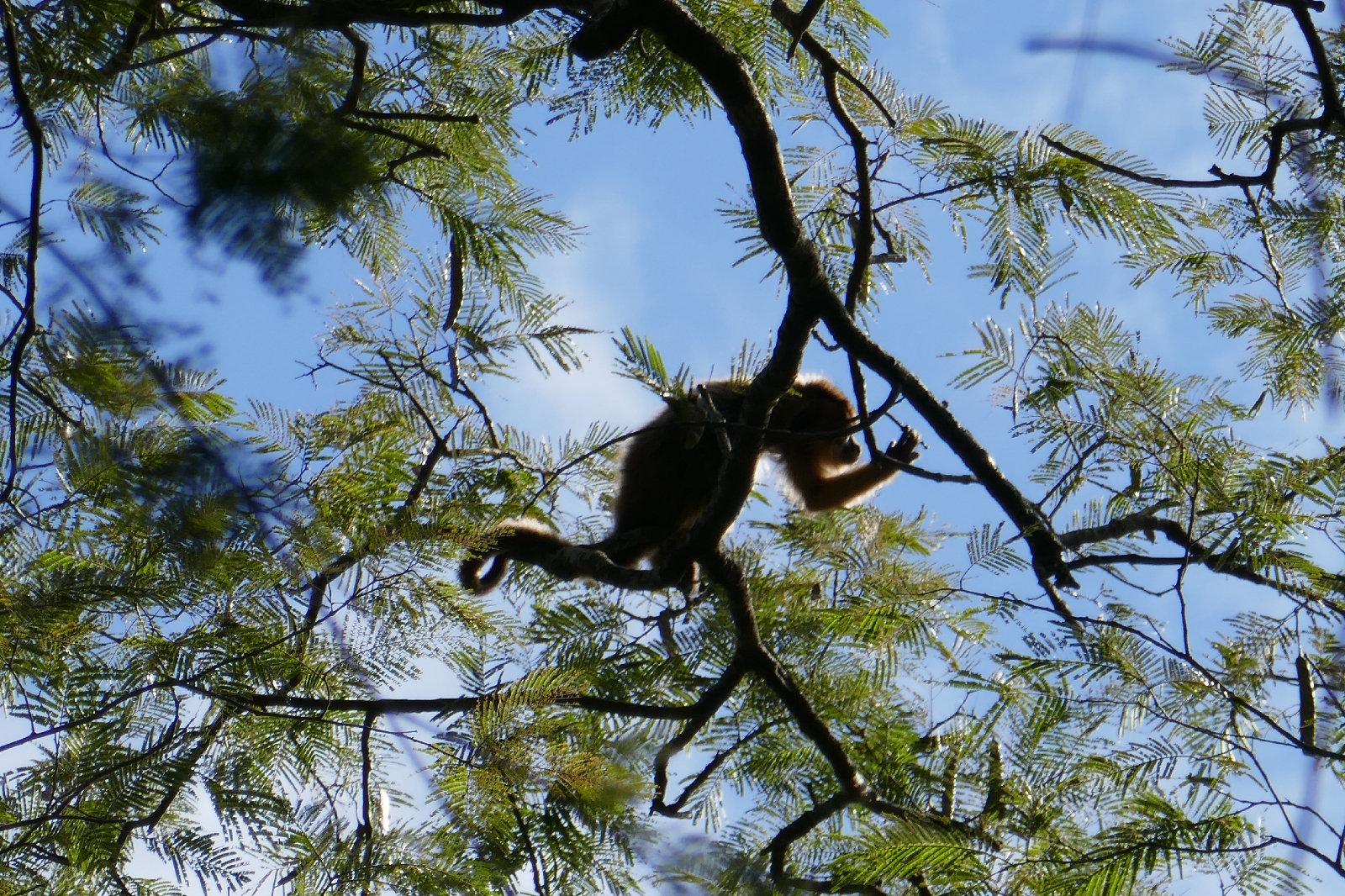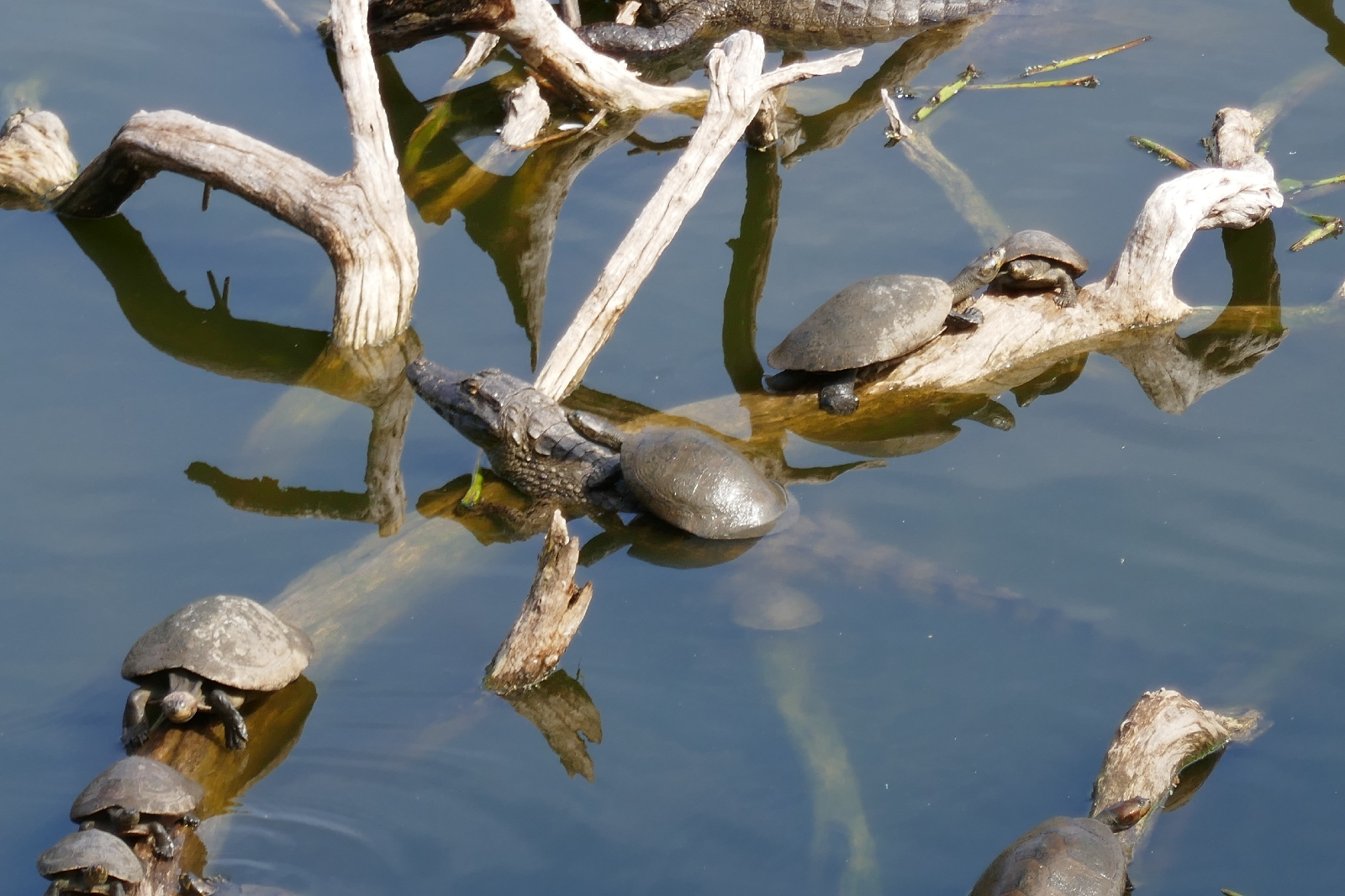Not having seen sloths before, I organized a visit to the Botanical Gardens in Santa Cruz de la Sierra, the largest city in Bolivia (1). My guide was Nicholas, a biologist who has studied Bolivia's bats, is fascinated by birds, and works to rescue sloths which sometimes wander into people's houses, much to the consternation of the resident dogs.
Three types of sloths (2) live in Bolivia (from least to most common): the one, two, and three-nailed varieties. We soon found a few three-nailed sloths hanging about on some pink-flowered trees near the park entrance. They were near the tree tops, trying to reach the warming sun on this cold day (3).
The name sloth was given to the animals due to their relative torpor. They move quite slowly and rarely go far (4). Algae grows on sloths, helping with camouflage, and ticks live on the animals symbiotically, protecting the slots from fungus infections. The animals descend from the trees once every 8 days or so to defecate (5).
Further into the parks and listening carefully, we spotted a crimson-crested Woodpecker, a Cocoa woodcreeper and a colorful Amazonian Motmot. No luck seeing a toucan, despite Nicholas playing the toucan bird-call on the Merlin ornothology app (6).
Monkeys are also present in the park. Vocalizing monkey calls, Nicholas spotted a white-eared marmoset and a squirrel monkey moving about in the trees (much faster than do the sloths).
Walking by a pond on the way back, caymans (a type of alligator) and turtles were absorbing the warm sun.
Next stop was Plaza Principal in the town of Cotoca. This seemed an odd choice, until Nucholas said that 5 sloths live in the trees of the town's central square. Again looking to the treetops, we spied 4 of the 5. A German couple (7) were also looking for the animals and Nicholas was glad to help.
Dinner at a sidewalk café does not seem to be a thing in Santa Cruz. Restaurants seem more likely to have an internal courtyard. Dessert was called "quiero mas" (I want more), a milky pudding with caramel and cinnamon. I did (want more).
(1) The original Bolivia travel plan went through the capital city of La Paz. However, the city's elevation of 14,000 feet convinced me to fly to the lowlands city of Santa Cruz (elevation 1,400 feet) to avoid altitude headaches.
(2) As in English, the Spanish word for sloth also means lazy.
(3) Cold for here. Temperatures this morning were in the 50s°F, with many locals sporting puffy coats and knit hats.
(4) I had first thought that Nicholas was particularly clever or eagled-eyed in spotting the sloths. While he is both, the sloths are most likely in or near the same tree where he last saw them.
(5) If a baby sloth falls from the tree, the mother may abandon the baby rather than risk predation on the ground. Nicholas told stories of people restoring the babies to their mothers.
(6) I had told him the only toucan I had ever heard of was Toucan Sam. While he did not know the name, when I showed him a picture later, he said "Froot Loops!" for which Toucan Sam is the mascot.
(7) Europeans, especially Germans, are common visitors to Santa Cruz.














No comments:
Post a Comment